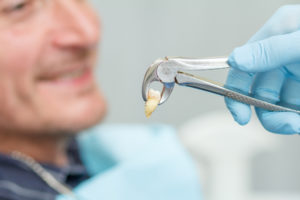
Infections can occur in every part of the body and dental infections are no exception. When a tooth has been extracted, bacteria will still be alive in the mouth, even more so with those who have bad oral hygiene. Infections are very common following extractions. Depending on how bad the tooth was that the dentist removed, they may prescribe you some antibiotics to take that will greatly reduce your risk of getting an infection. But in some cases, even antibiotics can’t prevent an infection.
If you go to the dentist before the extraction and are experiencing swelling of the face, swollen gums, pain in your teeth under light pressure, or bleeding around the extraction site, then you may already have an infection. If you indeed have an infection before you get the tooth treated, the dentist will prescribe you antibiotics to use following treatment. If you have a really bad abscess, you’ll need to use antibiotics to treat the infection before the dentist will remove the tooth.
In some cases, people develop an infection after the extraction. The reason for this, is bacteria. Following an extraction, bacteria will be more alive in the mouth than ever before. With the extraction site being exposed, the bacteria will be able to get into the site. This can lead to an infection due to the site being exposed and the fact that you are unable to use mouthwash or brush during the first 24 – 48 hours. Not being able to sterilize your mouth means that you are unable to kills the germs responsible for bacteria.
Even though infections can cause a lot of pain and need to be dealt with immediately, you may not have to take antibiotics once the dentist has extracted the tooth. Rinsing your mouth out with saltwater for the first few days will keep the extraction site clean. As long as you take care of the extraction site and do what your dentist tells you, you shouldn’t have any further problems with the extraction site or the infection.
